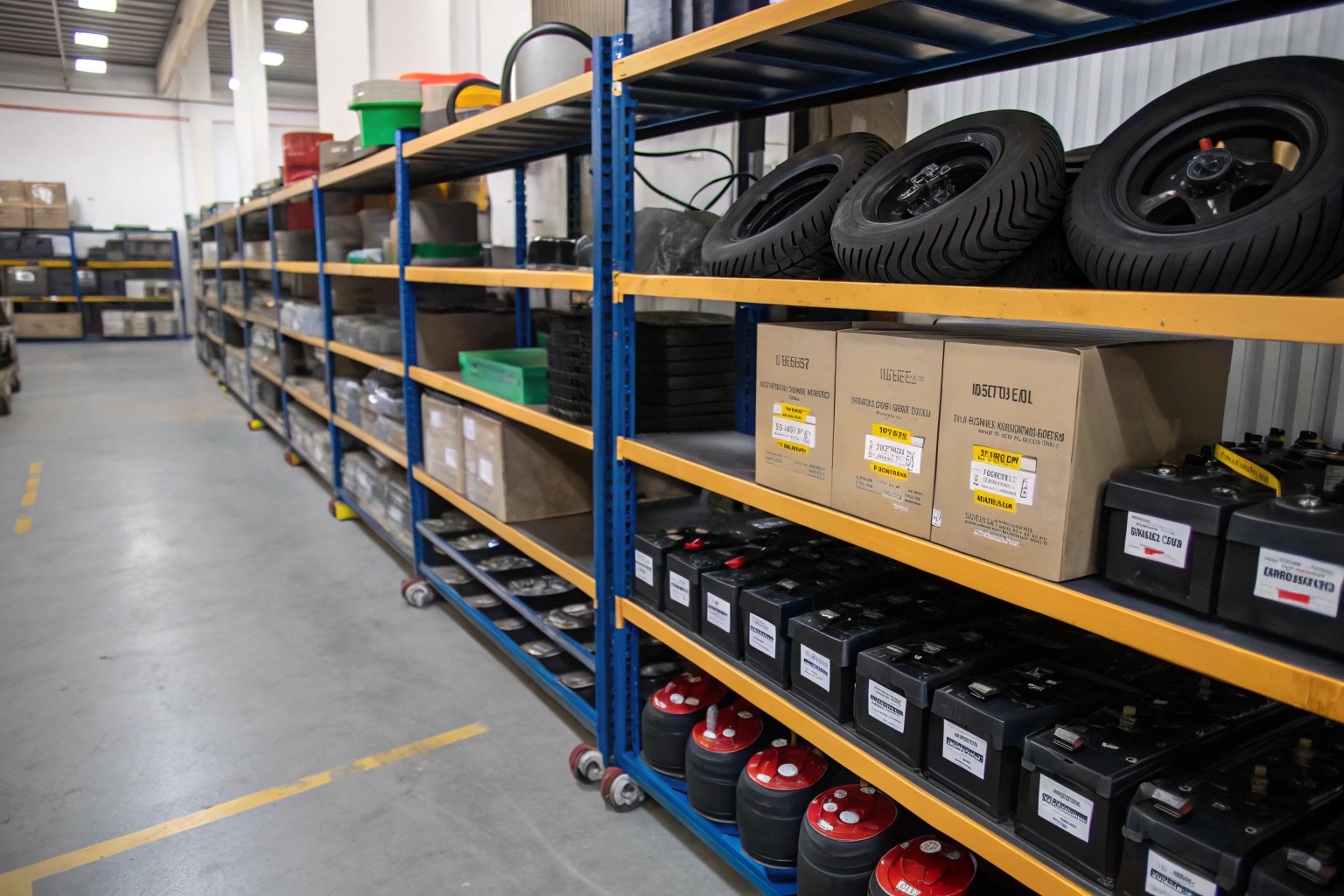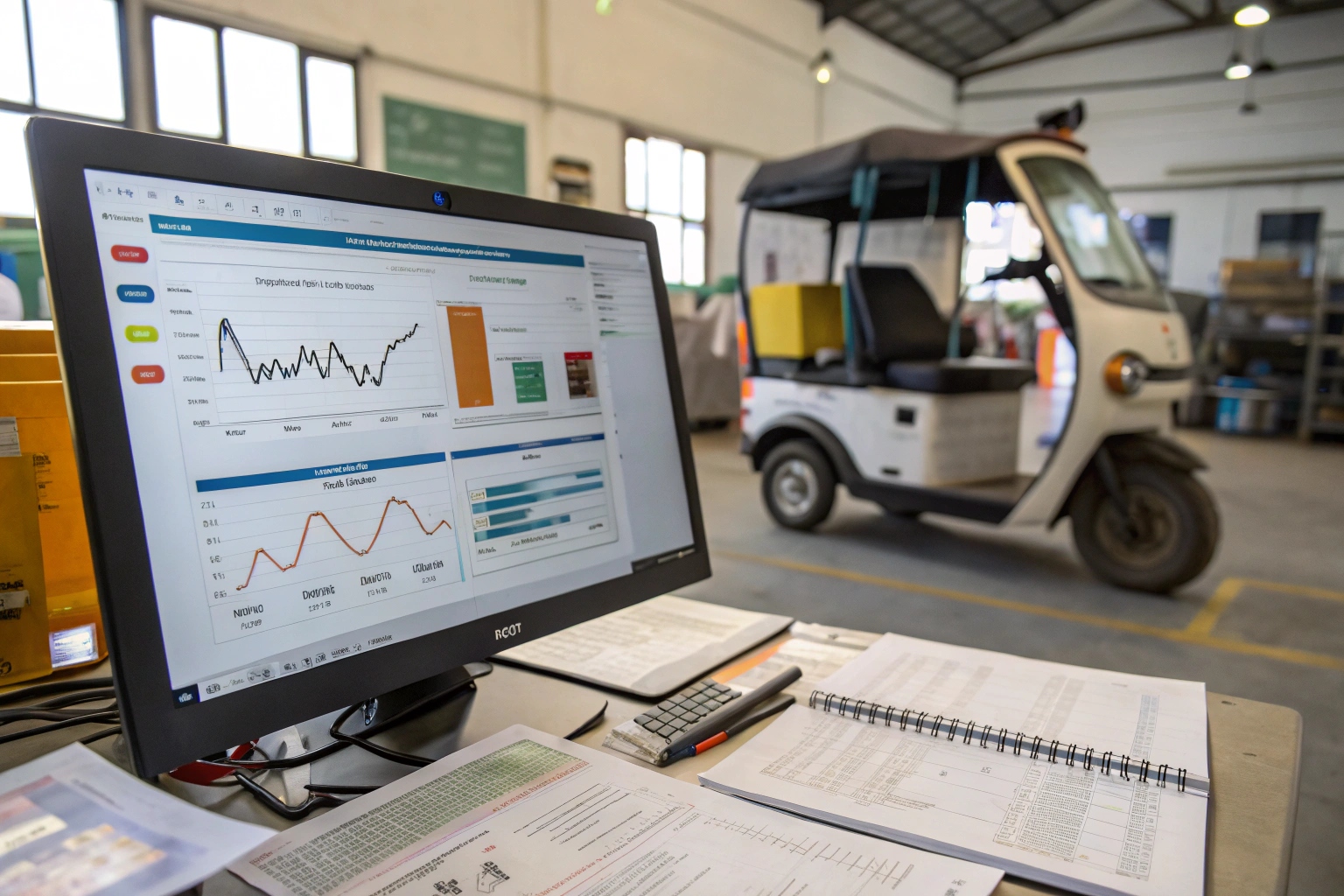You’ve invested in a container of electric tricycles, but the real work begins after the sale. Without a good parts strategy, a simple repair can ground a vehicle and damage your brand.
To professionally manage electric tricycle spare parts, distributors must categorize inventory, use software to track stock, establish clear reorder points, and create an organized warehouse. This ensures quick after-sales support and builds customer trust.

In my years of exporting electric cargo tricycles, I've seen two types of distributors. The first type focuses only on selling the units. The second, more successful type, builds a business around service. They understand that managing spare parts isn't just a cost; it's a profit center and the foundation of a strong reputation. They know that a driver with a broken-down e-rickshaw is losing money every hour. Providing a quick fix is what separates a one-time seller from a long-term market leader. Here is the system my most successful partners use.
What Spare Parts Should Electric Tricycle Distributors Stock First?
You have a limited budget and can't possibly stock every single part. You're worried about tying up cash in slow-moving inventory, but you also fear not having what your customers need.
First, stock the fast-moving consumables (Category A) like tires, brake pads, and lights. Next, keep a safety stock of critical electrical components (Category B) like controllers and throttles. These two categories will cover over 80% of common repairs.

Don't try to stock everything at once. The best approach is an A-B-C analysis to categorize your parts. At our factory, we help our partners build this initial list. Category A parts are your "must-stock" items. These are the consumables that wear out predictably through daily use. They are essential for routine maintenance and generate consistent service revenue. Category B parts are your safety stock. These are core components that don't fail often but are critical for the vehicle's operation. A customer can wait a day for a new lightbulb, but they can't wait two weeks for a new controller. Having these on hand is your business insurance. Category C parts, like frame components or specific motor bearings, can often be ordered from the factory as needed.
| Category | Part Examples | Stocking Strategy |
|---|---|---|
| A (Consumables) | Tires, Brake Pads/Shoes, Cables, Light Bulbs | Keep high stock levels; reorder frequently. |
| B (Critical) | Controller, Throttle Assembly, Charger | Maintain a "safety stock" of a few units. |
| C (Special) | Frame parts, Motor Casings, Suspension Arms | Order on-demand; low or no stock. |
How Can Distributors Forecast Spare Parts Demand for E-Rickshaws?
You're placing orders for spare parts based on guesswork. Sometimes you have too much stock gathering dust, and other times you're paying high fees for emergency air freight.
Forecast demand by analyzing your own maintenance data. Track every part used in repairs to identify trends. Combine this historical data with your total number of vehicles sold to calculate a usage ratio and set accurate reorder points.

The best forecaster is your own service history. From day one, you must log every single repair and every part used. After just a few months, you will see clear patterns. You'll know how many brake pads you use for every 50 vehicles in the field. This historical data is your gold. Once you have a baseline, you can improve your forecast. Consider the vehicle population—as you sell more tuk-tuks, your demand for parts will grow proportionately. Factor in lead time—how long does it take for a sea shipment to arrive from my factory? Your reorder point must be set to ensure new stock arrives before the old stock runs out. As a partner, we can provide you with initial usage estimates based on data from other distributors in similar markets, but your own data will always be the most accurate predictor.
What’s the Best Way to Organize a Tuk Tuk Spare Parts Inventory?
Your workshop is cluttered, and technicians waste valuable time searching for parts. This disorganization makes your business look unprofessional and slows down every single repair job.
The best way to organize inventory is to assign a unique part number (SKU) and a specific bin location to every item. Use clear labels and inventory management software to track everything in real-time.

A professional service center is an organized one. The first step is to give every part a home. We provide a complete parts catalog with part numbers and diagrams for all our electric tricycle models. Use these numbers as your Stock Keeping Units (SKUs).
- Label Everything: Every part, every bin, every shelf needs a label with the SKU and part name.
- Assign a Location: Each SKU is assigned a physical location in your warehouse (e.g., Aisle 3, Shelf B, Bin 4).
- Use Software: A simple inventory software will link the SKU to its location. When a technician needs a controller, they search the part number, and the system tells them exactly where to find it.
- Logical Layout: Store your fast-moving "Category A" parts in an easily accessible area near the service bays. Slower-moving "Category B and C" parts can be stored further back. This simple system eliminates wasted time and ensures your technicians can work efficiently.
How Should Distributors Handle Electric Tricycle After-Sales Support?
A customer calls with a problem, but you have no clear process. The call gets missed, the problem isn't logged, and the customer gets frustrated, tarnishing your brand's reputation.
Handle after-sales support by establishing a structured process. Use a ticketing system to log every customer request, train your technicians thoroughly, and maintain open communication with the factory for complex issues.

Great after-sales support is a system, not an afterthought. First, you need a way to log every issue. This can be a simple spreadsheet or a professional ticketing software. When a customer calls, create a ticket with their details, vehicle number, and the problem. This ensures nothing gets forgotten. Second, train your technicians. We provide detailed service manuals and troubleshooting guides for our electric cargo tricycles. A well-trained mechanic can diagnose problems accurately and fix them right the first time. Third, have a clear warranty policy. Know what is covered by warranty (e.g., a premature motor failure) and what is considered routine wear and tear (e.g., worn tires). Finally, maintain a feedback loop with the factory. If you notice a recurring issue across multiple vehicles, you must inform me. This feedback is critical for me to make product improvements that benefit all of my partners.
Conclusion
Effective spare parts management is the backbone of a successful electric tricycle distributorship. It is your key to building a trusted brand, creating happy customers, and ensuring long-term profitability in your market.

